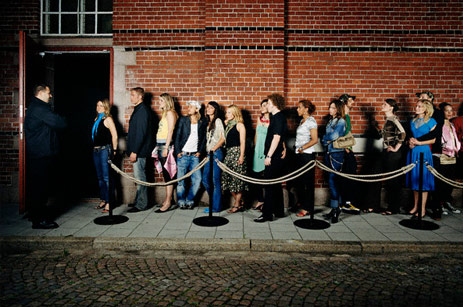Your Story Telling Sucks


There are rules to crafting an engaging story. One is, “Start as close to the end as possible.”
Look at the below sentence structure:
“Have you been to Toronto? (Looks for approval.) “Well I live in this neighbourhood in Toronto. And there’s this guy right? (Seeking approval.) I see him around sometimes, and he always has his shirt off, like he doesn’t ever wear shirts.”
This is better:
“There’s a bum in my neighbourhood who never wears a shirt…ever.”
I’ve cut out all unnecessary details, and left only the interesting part. It doesn’t matter if the listener has been to Toronto. Also, by, “asking,” the girls if they had been to Toronto, he is taking value, and seeking validation that his story is interesting. If you cut straight to the drama, to the end of the story, you give value. Always give value first. Never ask anything of the listener until you’ve provided the drama.
Here’s the difference between giving and taking value:
Taking (Hi, how are you?)
Giving (You look amazing tonight.)
Taking (What’s your name?)
Giving (I’m Tony.)
Taking (Do you come here often?)
Giving (This place rocks.)
You never take before you give. You never ask anyone for anything requiring thought, until you’ve given value, preferably in the form of entertainment.
Back to story telling.
Most people suck at it. They fill in all of these boring, pointless details like time and place (It was a dark and stormy night,) when instead they should get straight to the heart, to the drama, and every line should leave listeners craving more.
Take a look at the first line of one of my favourite novels; Charles Bukowski’s Post Office:
“It began as a mistake.”
Now, you know this is a book about the post office. But he doesn’t start by saying something boring like, “It was another day at the post office,” because we know it’s probably about a post office, so there’s no point wasting words. “It began as a mistake,” grabs you. What’s the mistake? The job at the post office, or something else? He hooks you from the first line.
Look at the first lines from my novel, A Thousand Tiny Failures:
“I tried to shove the kid off my chest, but I’d already given up. His pink fists pummelled my pimpled face, but I was too timid, too mentally weak to even try and defend myself.”
In two sentences I’ve created drama, and explained who my character is, both in age, and mentality. He’s a teenage pussy getting his ass kicked. Also, look at the poetic use of language: “His pink fists pummelled my pimpled face,” instead of, “He punched me in the head.” I use descriptive language to paint a picture instead of logical prose. You can almost feel those pimples busting under the kids pink fists.
Following the drama, I then ask the reader to listen to the back story. I don’t start the story with a long winded tale of growing up in the prairies. I start with a fight.
Your stories need to start with a bang.
Imagine this conversation:
Man: “Have you ever been in a fight?”
VS
Man: “Fighting can be fun.”
This is another rule of story telling. Don’t ask—tell.
The above is also an example of taking value vs giving.
Asking someone to think too early is the death of tension.
It’s not fun. But, “telling,” leads the listener to think without being asked. “Why did he say that? What did he mean? Is that true?”
This is called a hook. Every story should have multiple hooks that leave the reader like a hungry baby bird wanting more. A good entertainer asks very few questions, and instead leads the listener to create their own questions.
“Oh yeah, I danced in a ladyboy cabaret once.”
Imagine someone said that in a conversation. Wouldn’t you want to know a little bit more?
True story by the way.
A good book to read is, “The Adweek Guide to Copywriting,” by Joseph Sugarman. One of the key concepts is, “The Slippery Slide.”
The Slippery Slide means that every sentence is like a slide. The only point of the first line is to lead the reader to the second line. The only point of the second line is to lead the reader to the third line.
Look at this sentence:
“I banged this model last night. What’s with models and drugs?”
Both of those sentences would lead you down the slippery slide. He banged a model? How? What did she look like? Drugs? What kind?”
I start near the end, I create drama, I give value before I take value, I create a slippery slide.
Story taking takes practice, and I highly suggest if you struggle here, to take a creative writing course, or an improv class. Oh and of course, go out and flirt with many, many women.
***I’m in Vancouver BC and available for live coaching and phone coaching.***







Very good , teacher. To have the ability “spin a yarn” , is power. Tell , don’t ask , & don’t make your audience think ( work ). We , in the audience appreciate that. Make it easy for us, we like. Excellant English Literature advanced level , Tony.
I like that concept of giving vs. taking you stated here. Did you write more about that somewhere?
It’s not a new concept. Actually Tony Robbins talks a lot about it. So does Dale Carnegie, and many self help books. I talk about it more in my book “I Hope It’s Sunny Out.”
Thanks. I haven’t really been into that stuff before.